Samuel and Elbert Jackson House
Introduction
Text-to-speech Audio
Images
View of Samuel & Elbert Jackson House from Wantagh Avenue in 2013 photo (Dmadeo)
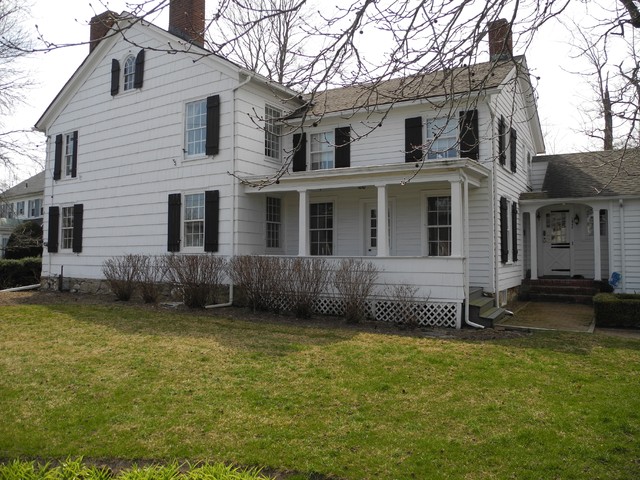
South facade of Samuel & Elbert Jackson House in 2006 photo for NRHP; entrance into addition (Noah Studenroth)
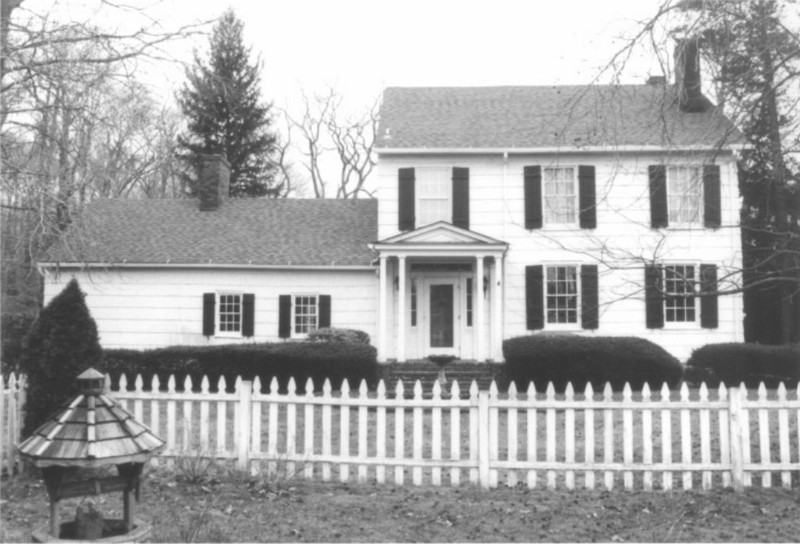
Brick fireplace/cooking hearth in ca. 1750 wing of Jackson House, NRHP photo (Noah Studenroth 2006)
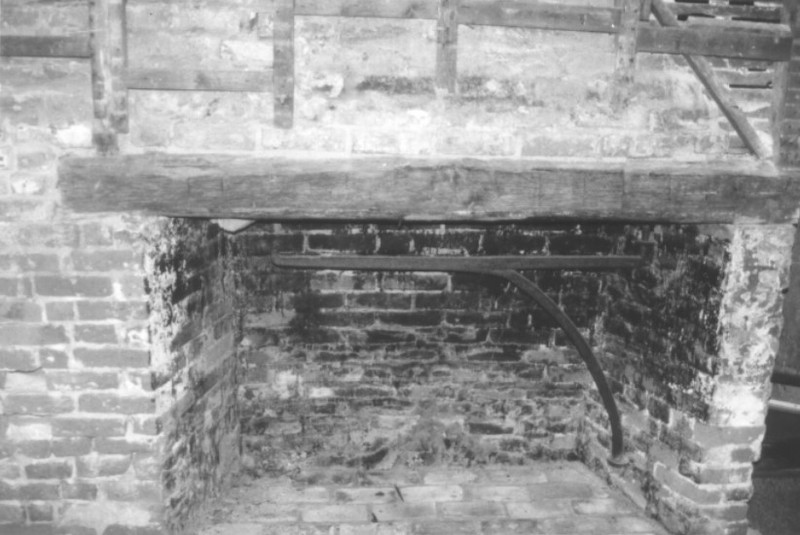
3 houses (green) owned by Mrs. E. Jackson on 1886 map of King & Queens County (Beers)
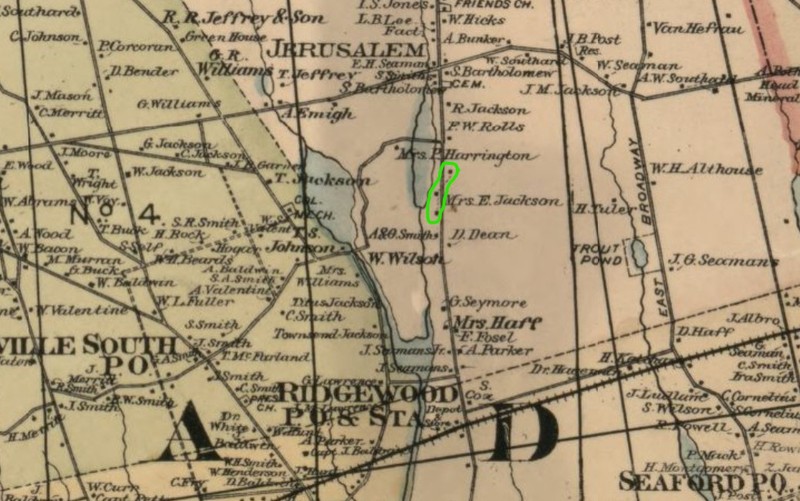
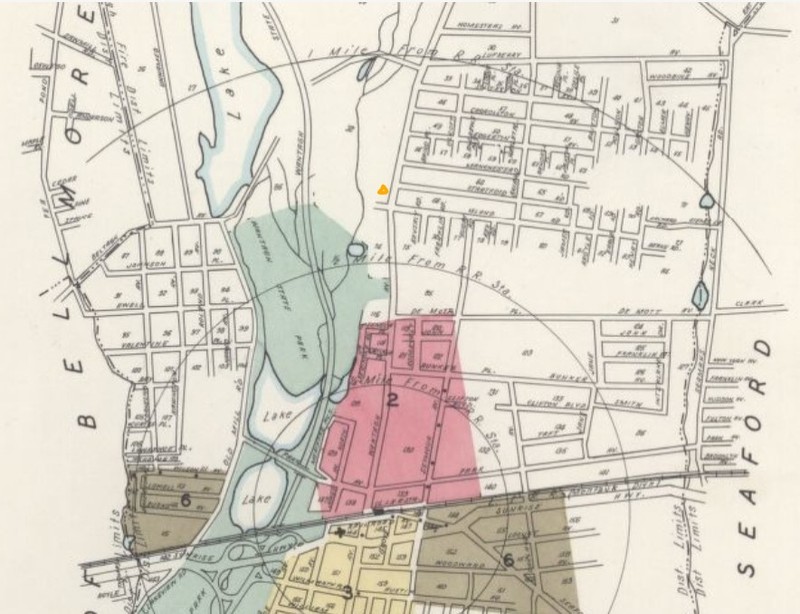
Backstory and Context
Text-to-speech Audio
The Jackson family has lived on Long Island since a Robert Jackson moved from Connecticut in 1644. When Samuel Jackson built and lived at the Samuel and Elbert Jackson House in the mid-18th century, the Wantagh area was known as South Jerusalem. Several Jackson family members owned farmland along the road where the house stands, known then as Jerusalem Lane; the land has been traced back to Robert Jackson. The original house was a 1.5-story timber frame building with a large, central hearth; it survives as one of the wings in the current house. The simple house featured one room to either side of the hearth and a sleeping loft.
Elbert Jackson (1807-1882) acquired the property in the early nineteenth century and enlarged the house by attaching a much larger, 2-story wood frame house in Greek Revival style to the south end of the original farmhouse. The new part of the house allowed for more formal spaces with a central hall layout. Elbert was the eighth generation descendant of Robert and was a farmer for all or most of his life. Since the 1860s, the Jackson House was been just over a half mile north of the Ridgeway Station of the Long Island Railroad that marks the center of the village. The station allowed for easy transport of farm goods to the New York City market.
The Jackson House was occupied in 1870 by Elbert (63, a farmer), his wife, Elizabeth (55, from the Bahamas); and a 14-year-old domestic servant named Phebe Meeks. Elbert owned real estate valued at $15,000 and personal property worth $10,000. Elizabeth's real estate was worth $5,000 with personal property estimated at $500. Elbert Jackson's farm covered 105 acres in 1870, with 30 of the acres wooded. The livestock included 4 horses, 3 milch cows, 2 working oxen, and 1 swine; he grew winter wheat, Indian corn, oats, peas/beans, and Irish potatoes. The farm produced butter, hay, and grass seed from mid-1869 to mid-1870. In 1880, 72-year-old Elbert lived with his wife, Elizabeth (65). Elbert listed his occupation on the census as a farmer; he died in 1882. An 1886 map of King and Queens County shows "Mrs. E. Jackson" (Elbert's widow) as the owner of three nearby structures along what is now Wantagh Avenue; two (including the Jackson House) were on the west side of the avenue and one was slightly further north, on the east side of the avenue. The name Wantagh wasn't used until a Post Office was established for the village in 1891 near the railroad station.
A kitchen wing was added onto the north end of the house in the early twenitieth century, and the main entrance was framed by a small classical looking porch with a pediment and two columns. By 1942, the population of the unincorporated Village of Wantagh was about 3,000; Wantagh Avenue was a major connecting road leading north to Jerusalem.The Samuel and Elbert Jackson House stands on the last remnant of the Samuel Jackson farm; the rest is essentially now a residential subdivision of mainly twentieth-century homes. The Briggs family owned the house in 2005. The Jackson House was listed for sale and was purchased in December 2020. The 5-bedroom, 3.5-bath house was described as a center hall federal period colonial with 4 fireplaces, a home office, wide plank pine flooring, and secret gardens on the circa half-acre lot.
Sources
O'Connor-Arena, Melissa. The Jackson Homestead, Patch: Wantagh-Seaford. November 19th 2010. Accessed May 6th 2021. https://patch.com/new-york/wantagh/the-jackson-homestead.
Realtor.com. 1542 Wantagh Avenue, Wantagh, N.Y. 11793, Realtor.com. April 17th 2021. Accessed May 6th 2021. https://www.realtor.com/realestateandhomes-detail/1542-Wantagh-Ave_Wantagh_NY_11793_M32019-24093.
Studenroth, Zachary N. NRHP Nomination of Samuel and Elbert Jackson House, Wantagh, N.Y.. National Register. Washington, DC. National Park Service, 2006.
U.S. Census. Household of Elbert Jackson in Town of Hempstead, Queens County, N.Y., dwelling 513, family 549. Washington, DC. U.S. Government, 1870.
U.S. Census of Agriculture. Farm of Elbert Jackson in Town of Hempstead, Queens County, N.Y., page 11, line 15. Washington, DC. U.S. Government, 1870.
U.S. Census. Household of Elbert Jackson in Town of Hempstead, Queens County, N.Y., dwelling 314, family 328. Washington, DC. U.S. Government, 1880.
https://en.wikipedia.org/wiki/Samuel_and_Elbert_Jackson_House#/media/File:Samuel_and_Elbert_Jackson_House_-_Wantagh_NY.png
New York State Cultural Resource Information System (NYS CRIS): https://cris.parks.ny.gov/
NYS CRIS: https://cris.parks.ny.gov/
Library of Congress: https://www.loc.gov/item/2013593269
